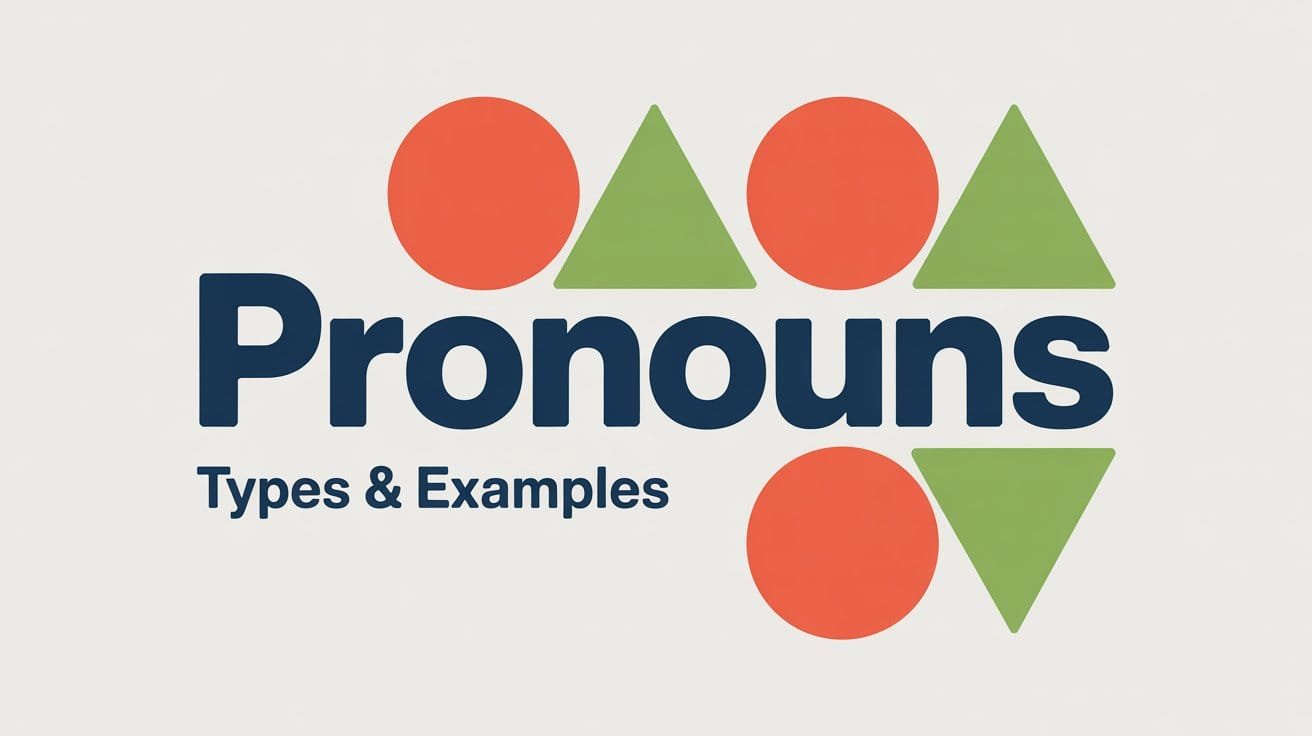Reflexive pronouns are used when the subject and the object of a sentence refer to the same person or thing. They end in -self or -selves and include words like myself, yourself, himself, and themselves.
These pronouns show that the action of the verb turns back to the subject. They are commonly used to emphasize who performs an action or to show that someone does something alone or without help.
What Are Reflexive Pronouns?
Reflexive Pronoun Definition: Reflexive pronouns are special words in English that we use when the subject of a sentence is also the one doing the action to themselves. These pronouns help us show that the action is “reflecting” back to the person (or group) performing the action.
List of Reflexive Pronouns
- Myself
- Yourself
- Himself
- Herself
- Itself
- Ourselves
- Yourselves
- Themselves
Reflexive Pronouns Examples
Let’s see the reflexive pronouns examples and use in sentences:
- Myself: I baked the cake myself.
- Yourself: Did you enjoy yourself at the party?
- Himself: He fixed the car himself.
- Herself: She did the painting herself.
- Itself: The cat groomed itself.
- Ourselves: We organized the event ourselves.
- Yourselves: You should be proud of yourselves.
- Themselves: They made the costumes themselves.
How to Use Reflexive Pronouns
Using reflexive pronouns is simpler than you might think. They always reflect back to the subject of the sentence. Let’s look at some examples:
| Sentence | Correct Usage |
| I cut myself. | The subject (I) cuts “myself” (the same person). |
| She treated herself to ice cream. | The subject (She) treated “herself” (the same person). |
| They fixed the car themselves. | The subject (They) fixed “themselves” (the same group). |
- I cut myself. Imagine you’re holding scissors, and you cut yourself – the action is coming back to you.
- She treated herself to ice cream. Just like treating yourself to something special, the action of treating comes back to the same person – herself.
- They fixed the car themselves. Imagine friends working on a car together. When they fix it themselves, the action circles back to them as a group.
Table of Action and Reflection
| Action | Reflexive Pronoun | Picture |
| I baked a cake | myself | You, baking a cake |
| He painted | himself | Him, with a paintbrush |
| We enjoyed | ourselves | Friends celebrating |
| She sang | herself | Her, singing |
Reflexive Pronoun Exceptions
While reflexive pronouns usually reflect the action back to the doer, there are times when they break their own rule and add a little twist. These exceptions might seem puzzling, but they’re here to make sentences more interesting and clear.
Unveiling the Exceptions:
- For Emphasis: Sometimes, reflexive pronouns jump in just to give extra oomph to the sentence. Imagine saying, “I myself will solve the puzzle.” Here, “myself” adds emphasis to show that you are taking charge.
- No Clear Receiver: When there’s no specific person or thing receiving the action, we might use reflexive pronouns. For example, “The cat cleaned itself.” Here, the cat did the action, and there’s no other recipient involved.
- Expressing Surprise: Reflexive pronouns can pop up in sentences to show surprise or disbelief. Imagine saying, “She did it all by herself!” Here, “herself” adds a touch of wonder to the sentence.
Tips for Getting Reflexive Pronouns Right
Using reflexive pronouns might seem like a riddle, but fear not! With a bit of practice and these helpful tips, you’ll be weaving self-reflecting sentences like a pro in no time.
1. Match the Pronoun to the Subject: Reflexive pronouns are like matching pairs – they need to align with the subject of the sentence. If the subject is singular, use “myself,” “yourself,” “himself,” “herself,” or “itself.” For plural subjects, go for “ourselves,” “yourselves,” or “themselves.”
2. Check the Action: Ask yourself, “Is the action reflecting back to the doer?” If the answer is yes, a reflexive pronoun is likely needed. For example, “She dressed herself,” where the dressing action reflects back to her.
3. Watch for Emphasis: Keep an eye out for situations where reflexive pronouns emphasize the action. If you’re saying, “I did it myself,” you’re emphasizing your role in the action.
4. Be Clear on Exceptions: Remember the exceptions we talked about? Sometimes reflexive pronouns don’t follow the usual rules. So, when you see them in action, consider why they’re there – for emphasis, surprise, or when no clear recipient is involved.
5. Picture the Action: Imagine the action happening right in front of you. If it’s an action that someone is doing to themselves, that’s your cue for a reflexive pronoun. It’s like watching a mini movie in your mind!
6. Practice with Play: Turn learning into a game! Create sentences with reflexive pronouns in a fun and imaginative way. You can even challenge yourself to use them while describing your daily activities.
7. Take It Slow: Learning any new skill takes time. Start with simple sentences and gradually incorporate more complex ones. Don’t rush – you’re on your way to becoming a reflexive pronoun master!
8. Proofread and Edit: After writing, give your sentences a quick look to make sure the reflexive pronouns match the subject and action correctly. A little proofreading can make a big difference!
9. Be Patient with Yourself: Mistakes happen, and that’s okay! Learning is all about making progress. If you slip up, take it as an opportunity to improve.
Reflexive Pronouns Exercises
Here are some exercises to help you practice reflexive pronouns, along with the answer keys.
Exercise 1: Fill in the Blanks with the Correct Reflexive Pronoun
- They decorated the room ______________.
- He can fix the bike ______________.
- We need to believe in ______________.
- She told a story about ______________.
Answer Key:
- themselves
- himself
- ourselves
- herself
Exercise 2: Identify the Reflexive Pronouns
Read the following sentences and identify the reflexive pronouns.
- She washed herself before going to the party.
- We made the sandwiches ourselves.
- He congratulated himself on the achievement.
- They enjoyed the movie all by themselves.
Answer Key:
- herself
- ourselves
- himself
- themselves
Exercise 3: Correct the Sentence
Some of the sentences below have incorrect reflexive pronouns. Correct the sentences by replacing the incorrect reflexive pronoun with the correct one.
- He fixed the computer by themselves.
- She baked the cake herself.
- We can complete the project by himself.
- They built the treehouse by yourself.
Answer Key:
- He fixed the computer by himself.
- She baked the cake herself.
- We can complete the project by ourselves.
- They built the treehouse by themselves.
Exercise 4: Create Sentences
Create sentences using the following prompts and reflexive pronouns:
- I / prepare / breakfast
- They / clean / the house
- She / enjoy / the movie
- We / teach / how to swim
Answer Key:
- I prepared breakfast myself.
- They cleaned the house themselves.
- She enjoyed the movie herself.
- We taught ourselves how to swim.



